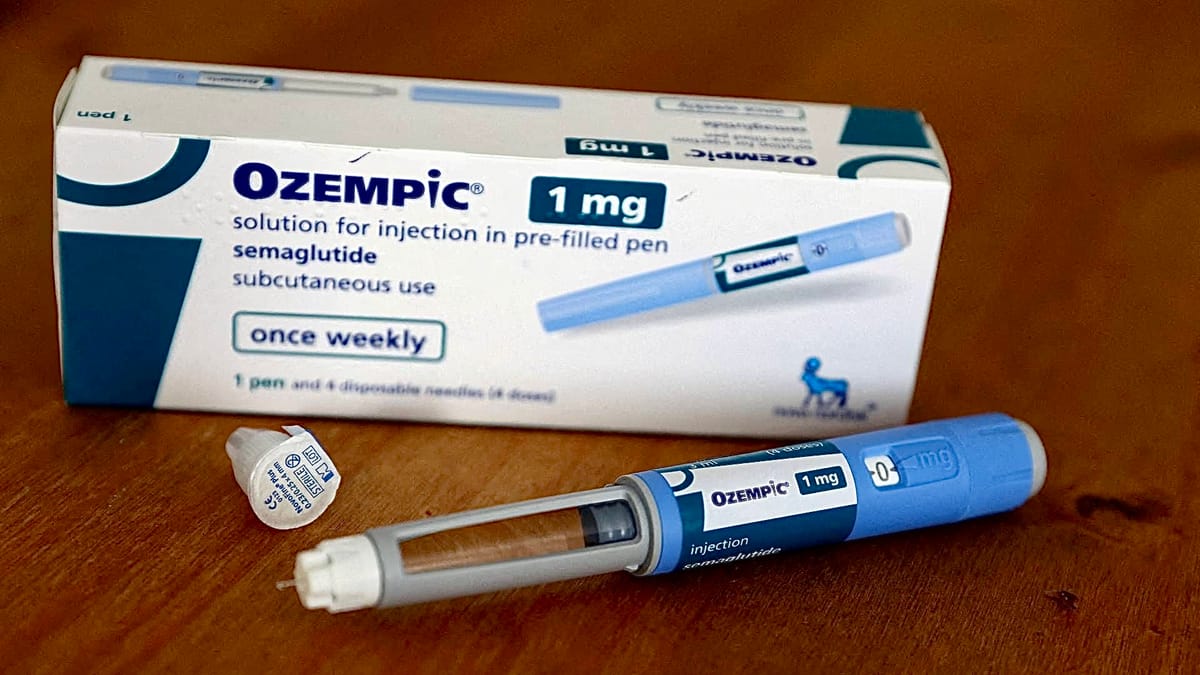With Non-Brand Weight Loss Drugs—Caveat Emptor
Quality Control—or the lack thereof—could be deadly

Imagine there was a miracle pill that you could take and lose 2 pounds every night while you slept. No dieting. No exercise. No hunger pangs, cravings or depriving yourself of your favorite foods. Just take the pill and watch the fat go away!
That’s the plot of an episode of Dr. Who from 2012, “Partners in Crime.” David Tennant as the 10th Doctor and Companion Donna Noble are the eponymous Partners in the Season Four opener. They’re amazed—and just a bit suspicious—by the new weight loss capsule from Adipose Industries.
Everything is going swimmingly for those lucky people taking the Adipose packs, until…
A magic weight loss pill was only the stuff of dreams and sci-fi until 2005, when the first Glucagon-like Peptide-1 (GLP-1) agonist was approved by the FDA for the treatment of Type II diabetes. These drugs lower blood sugar by promoting the secretion of insulin (among other things), and it quickly became apparent that one of the things they did was promote weight loss.
When the first of these drugs was approved for obesity in 2021…the rest, as they say, is history.
Literally overnight, everyone knew about Ozempic and its cousins. At long last, there really was a magical weight loss drug! And, as you’d expect, the demand for these drugs went through the roof, far outstripping supply.
That's where the problems began.
With untold thousands wanting these drugs, and companies unable to keep up with the supply, the FDA allowed compounding pharmacies to supply these drugs as a stop-gap measure. From 2022 through 2024, this helped alleviate the shortages, but created problems of its own.
As of early 2026, the FDA declared the shortages of semiglutide and tirzepatide officially resolved. Now, it’s cracking down on the compounding pharmacies, online outlets and other off-brand suppliers of these drugs.
Because all the government has to do is decree that a substance can’t be obtained, and the situation is magically resolved, right? After all, that’s worked so well for alcohol prohibition, and marijuana prohibition, and cocaine, and meth, and…and…yeah, no.
Fun fact: the next case of prohibition that works will be the first. Ask anybody who works in a prison—they’ll tell you drugs “inside” are a problem. And, if we can’t stop the flow of drugs into our prisons…? Do the math.
Looked at objectively, the problems we’re having with “bootleg” GLP-1 drugs mimic the problems of prohibitions. The scarcity of the drugs (like the scarcity induced by prohibitions) and the sky-high cost of brand-name drugs (again, like the cost of prohibited substances), makes people who want them look for alternative sources.
Supply and demand. It’s amazing how many people just don’t understand how this works—or flatly deny it, because they really, really don’t want it to be true. But, that’s a rant for another day.
With the GLP-1 drugs, the genie is well and truly out of the bottle. It’s impossible to go two minutes, doomscrolling on Fakebook or ScrewTube, without seeing an ad for a discount GLP-1 drug—Fast! Quick! Cheap! And since the brand names of these drugs are $300-$500 a month (with insurance, if it’s covered, which it’s often not) the Cheap! part is a major selling point.
And if you pay retail for Ozempic out of pocket? I just checked GoodRx, and it’s $995 per syringe. That's one dose, for one week. It’s that price at essentially every pharmacy I checked.
I’ve seen vials of off-brand GLP-1 drugs advertised for as low as $50 online. Is that the real price for a week’s dose? I have no idea—but I do know that $50 is a lot better than $995!
With that much profit potential at stake, is it any wonder that some Bad Actors choose to pad their profits and rush product out the door?
Therein lies the problem that bootleg GLP-1 drugs share with all other supply—demand mismatches, just like prohibitions:
Quality control. Or, rather, the lack thereof.
It was a problem of lead (from lead-slaughtered radiators used as condensers) and wood alcohol in the booze that poisoned people during Prohibition. It’s the problem with strychnine or baby laxatives or who-knows-what else in your party drugs. It's the who-knows-what that sends you to the ER or the morgue. It’s the wildly variable potency and “extra ingredients” of the booze or the baggie or the vial that gets you into trouble, or unalived.
Just ask Janis Joplin, Jim Morrison, Len Bias or any of the thousands of OD victims over the years. Oh, wait; you can’t.
It’s the same risk you run with so-called “discount” GLP-1 drugs.
You can’t be sure what is (and what is NOT) in them. You can’t be sure that the dose you think you’re getting is actually what you’re getting.
There’s been a 1,500% jump in GLP-1 ODs and bad reactions since 2019. There have been deaths. And, the risks are still there, FDA proclamations notwithstanding.
That’s not to say that every compounding pharmacy or discount vendor are Bad Actors—the vast majority are not. Still, it only takes one bad batch to ruin your day—sometimes permanently.
Bottom line: the only way to be sure you’re getting the good stuff…is to get the good stuff. Name-brand products, from a pharmacy, with a script from a professional you talk with personally—not just by phone or by e-form. Period.
Yes, it’s a pain. Yes, it’s expensive.
Yes, it’s just the way it is.
And if you’re an adult who chooses to pay your money and take your chances? The Grumpy Old Conservatarian in me says that you have that right. Freedom of choice, free will, caveat emptor and all that.
Just don’t come crying to me, or expect me to send flowers when bad things happen.
Opinions do not reflect the views and opinions of ALPolitics.com. ALPolitics.com makes no claims nor assumes any responsibility for the information and opinions expressed above.




